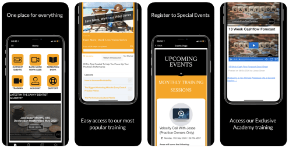As we live amidst the most trying of times in modern history, uncertainty seems to be the keyword. COVID-19 has shaken up the entire world. From a business perspective, there is a numbness with no sense of direction. What do you do? What can you do? What should you have done to prepare for such uncertainty? How could you better prepare for risk in the future? Is risk even controllable? It is alright to be overwhelmed by all these questions. Not just dental practice owners, but businesses of all types and sizes are going through similar conundrums right now. And the best way to answer these questions is to understand business risk and different methods and processes for mitigating it. And that is what I will cover today. Let’s unpack my strategies to manage risk.
The Risk Analysis
The value of a business is determined using the basic formula where value is equal to the repeatable and sustainable earnings times a multiple. But another important criterion for determining the value of a business is its ability to manage risk. A business that can manage risk efficiently can sustain through trying times. The best way to analyse risk is to understand the factors that could disrupt the business’s future stream of earnings and then take measures to mitigate those risk factors. Primarily, there are two categories of risks- the controllable factors and the uncontrollable factors.
The Controllable Risk Factors
These factors are easily controllable but are often overlooked in the mist of day to day operations.
Over-Reliance
This is one of the most common, and seldom realised factor. Over-reliance could happen in multiples forms. For example, a practice that heavily relies on preferred provider schemes for patient flow only focuses on one customer group; or overly relying on one supplier or one manufacturer. Over-reliance could also be on specific members of the staff so much so that losing that member could compromise the practice’s ability to operate well in the future. In order to mitigate risk related to over-reliance, a business needs to make conscious efforts to distribute their customer base across different platforms, delegate tasks efficiently among all team members and stop relying on single sources of providers and manufacturers.
Cash Flow
In a nutshell, a business is only sustainable in the long run if it has a healthy cash flow. Businesses that have table cash flow, and where the cash flow is predictable have more value compared to businesses with cash flow that seems like it’s on a roller coaster ride. As a practice owner, you need to implement a structure that allows for repeatable and sustainable production of cash through the business.
Rainy Day Reserves
Another great way to mitigate risk is to prepare for it well in advance. Your risk management measures should be jotted down on your balance sheet. A property investor takes into account the vacancy periods of a rental property when determining monthly rent. Similarly, you need to prepare for those ‘vacancy periods’ well in advance. You should have cash reserves for emergencies. Ideally, this rainy day reserve should total around three to six months-worth of expenses. This doesn’t necessarily need to be in the form of cash, but it’d be good to have instant access to it should you need it.
External Input
Did you know how many coaches Tiger Woods had when he was at the pinnacle of success? Five! Now, one would think why does a person on almost a never-ending winning streak need five coaches? He should have been arrogant enough to not even keep one; but he was smart enough to opt for 5 instead because, in his own words, ‘he couldn’t see himself swing.’ Just like you cannot see yourself swing. We all have blind spots. Our decisions are driven by past experiences, our own set of information and our value system that sometimes limits our perspective of what the best decision should or could be. Intelligence runs low when emotions are running high, just like they are right now. It makes sense to get some external input to get a better perspective on matters and on how to tackle them.
The Uncontrollable Risk Factors
These are factors that you cannot really predict or control yourself. For instance, if an influential person in power ends up making a controversial statement, it could instantly have an impact on the stock market, or a natural disaster or other environmental, social or economic disasters. Obviously, we cannot change those circumstances, but we can make changes that could help us prepare for those times or how we respond to those curveballs.
The Economic Conditions
The best way to tackle uncontrollable economic conditions is to maintain a healthy cash flow.
The Industry Specifications
These are factors that are specific to dentistry but are uncontrollable. For instance, you can’t influence the number of dentists being trained or the activities of the health insurance companies or preferred provider networks. The best way to mitigate such risks is to strongly position yourself in the market,
The Regulations
These include the laws imposed. Of course, one could try to influence the outcome to some extent, but for the most part, you don’t have any control over it. Once the decisions are made, you just need to run with it.
Competitors
This is one factor that most businesses focus too much of their time and energy on; and wrongfully so in my opinion. It is better, and more beneficial to focus on your own race rather than how others are doing it.
Mitigating these Risks
When it comes to mitigating risks we all need to find ways to achieve certain levels of control. Your objective should be to increase your level of control over the different types of factors highlighted above. Control over everything of course isn’t possible. Sometimes we have to accept we can only control so much. Recent events have shown that to be true. But from every challenge and every adversity, from all of the heartache we have experienced as dentists and practice owners in recent weeks, and the uncertainty we still feel, we can find lessons about risk that will be lifelong.
P.S. Whenever you’re ready …. here are 4 ways I can help you grow your dental practice:
1. Grab a free chapter from my book “Retention – How to Plug the #1 Profit Leak in Your Dental Practice”
The book is the definitive guide to patient retention and how to use internal marketing to grow your practice – Click Here
2. Join the Savvy Dentist community and connect with dentists who are scaling their practice too
It’s our Facebook group where clever dentists learn to become commercially smart so that they have more patients, more profit and less stress. – Click Here
3. Attend a Practice Max Intensive live event
Our 2 day immersive events provide access to the latest entrepreneurial thinking and actionable strategies to drive your practice forward. You’ll leave with a game plan to take your results to the next level. If you’d like to join us, just send me a message with the word “Event and I’ll get you all the details! – Click here
4. Work with me and my team privately
If you’d like to work directly with me and my team to take your profit from 6 figures to 7 figures …. just send me a message with the word “Private”… tell me a little about your practice and what you would like to work on together, and I’ll get you all the details! – Click here






